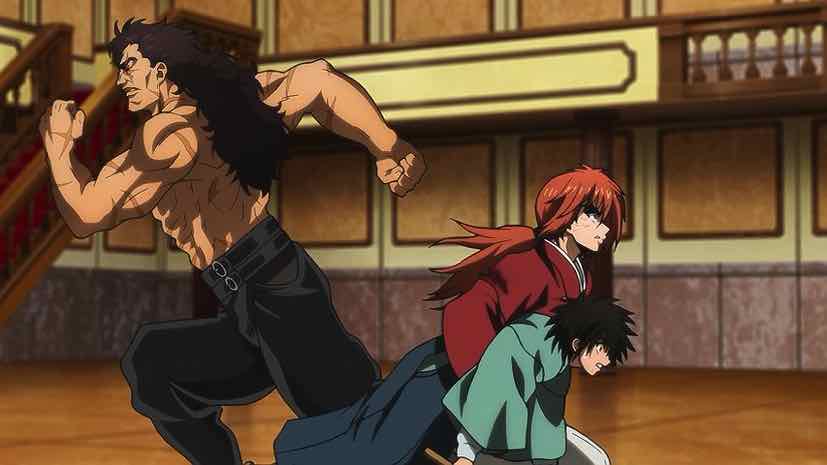 I’m still sort of trying to figure out what it means that I got no comments on one of the best anime episodes of the year, last week’s Rurouni Kenshin. It got lots of views, which is nice – I see no evidence the series is losing its following. Maybe it’s just a bit too sasuga (as opposed to Undead Girl Murder Farce’s sakuga), delivering what fans of the franchise expect too adroitly. It’s in the same position the 2011 Hunter X Hunter reboot was – following in the footsteps of a well-received Furuhashi Kazuhiro adaptation and trying to more faithfully follow the manga. A thankless job, perhaps, though that one did eventually win over the bulk of the audience.
I’m still sort of trying to figure out what it means that I got no comments on one of the best anime episodes of the year, last week’s Rurouni Kenshin. It got lots of views, which is nice – I see no evidence the series is losing its following. Maybe it’s just a bit too sasuga (as opposed to Undead Girl Murder Farce’s sakuga), delivering what fans of the franchise expect too adroitly. It’s in the same position the 2011 Hunter X Hunter reboot was – following in the footsteps of a well-received Furuhashi Kazuhiro adaptation and trying to more faithfully follow the manga. A thankless job, perhaps, though that one did eventually win over the bulk of the audience.
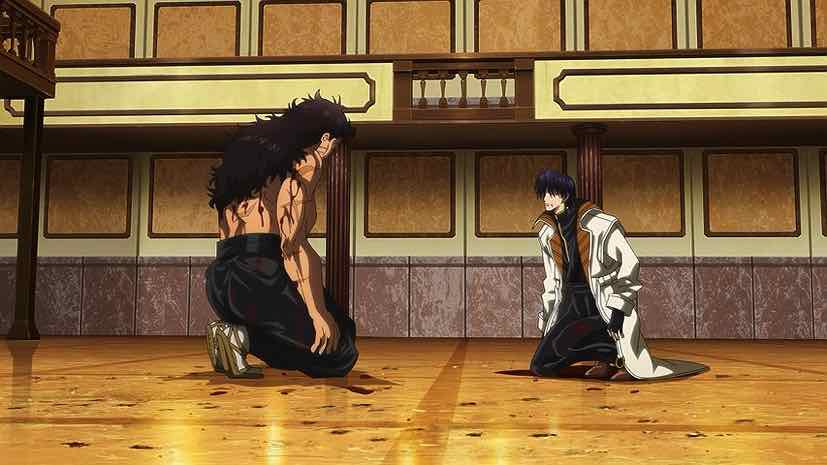 One other big commonality between these series, of course, is that they each bear the hopes of fans that a beloved and heretofore unadapted manga arc will finally see daylight. “Chimera Ant” did, and if “Jinchuu” eventually does too I have no doubt there will be a similar spike in engagement. For now, Lidenfilms’ version just continues to do what it does, deliver the goods without much grandstanding or improvisation. These last few eps represent a pretty important chunk of the manga, a sizable part of the story’s foundation being laid down. It wasn’t broken, and Yamamoto Hideyo and Kurata Hideyuki rightfully made no attempt to fix it.
One other big commonality between these series, of course, is that they each bear the hopes of fans that a beloved and heretofore unadapted manga arc will finally see daylight. “Chimera Ant” did, and if “Jinchuu” eventually does too I have no doubt there will be a similar spike in engagement. For now, Lidenfilms’ version just continues to do what it does, deliver the goods without much grandstanding or improvisation. These last few eps represent a pretty important chunk of the manga, a sizable part of the story’s foundation being laid down. It wasn’t broken, and Yamamoto Hideyo and Kurata Hideyuki rightfully made no attempt to fix it.
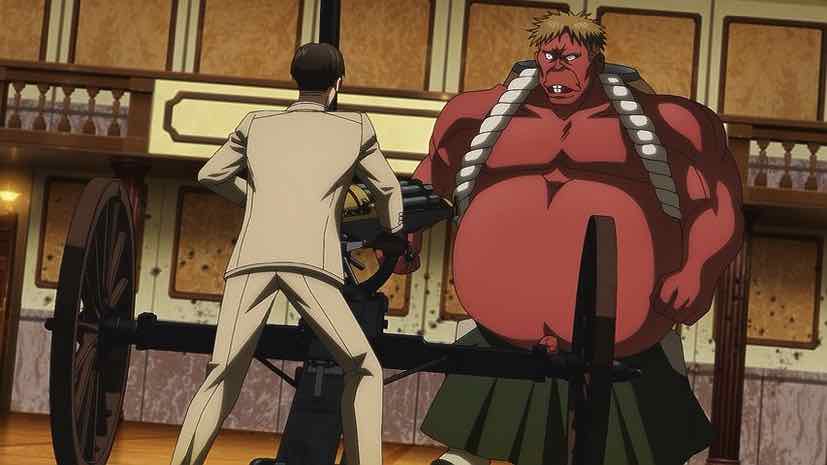 Coming back to this material now, roughly two decades after I first experienced it, one difference I find is that I’m much more aware of how deeply Watsuki rooted the story in historical context. I mean, it’s a samurai epic – of course it’s historical. But back then, before I knew much about Japanese history (or manga), I was pretty much caught up in the character arcs and the fights. Now I see how the entire series is very much a reflection on the end of an era, and how this arc particularly is defined by that (to the point where even the characters acknowledge it).
Coming back to this material now, roughly two decades after I first experienced it, one difference I find is that I’m much more aware of how deeply Watsuki rooted the story in historical context. I mean, it’s a samurai epic – of course it’s historical. But back then, before I knew much about Japanese history (or manga), I was pretty much caught up in the character arcs and the fights. Now I see how the entire series is very much a reflection on the end of an era, and how this arc particularly is defined by that (to the point where even the characters acknowledge it).
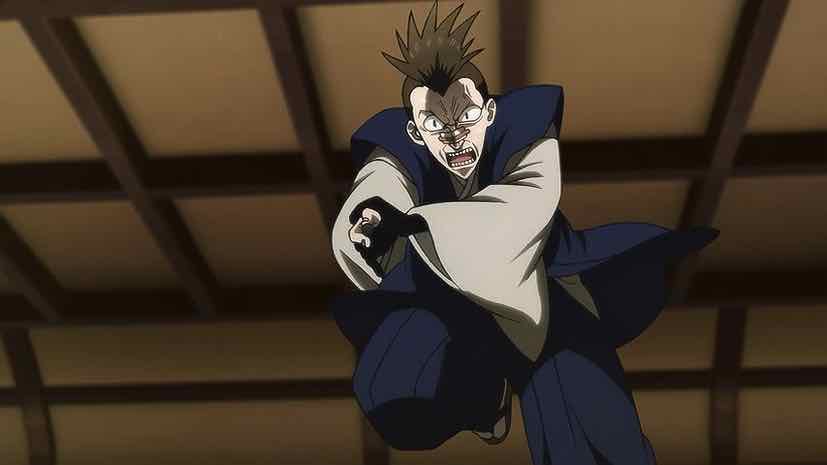 In that context, the deaths of Aoshi’s four retainers are rather poetical. Starting with Shikijo last week that go down one by one. Hyottoko, Beshimi, even Hannya – all die, and all for the purpose of allowing their leader to live. Hannya in particular chooses to sacrifice himself as a decoy for the sake of Kenshin being able to retrieve his sakabatou. Again, this is for Aoshi’s sake – but Hannya makes sure Kenshin is aware that Megumi is close at-hand. Kanryuu guns then down one by one, gloating over the superiority of technological advancement over martial skill.
In that context, the deaths of Aoshi’s four retainers are rather poetical. Starting with Shikijo last week that go down one by one. Hyottoko, Beshimi, even Hannya – all die, and all for the purpose of allowing their leader to live. Hannya in particular chooses to sacrifice himself as a decoy for the sake of Kenshin being able to retrieve his sakabatou. Again, this is for Aoshi’s sake – but Hannya makes sure Kenshin is aware that Megumi is close at-hand. Kanryuu guns then down one by one, gloating over the superiority of technological advancement over martial skill.
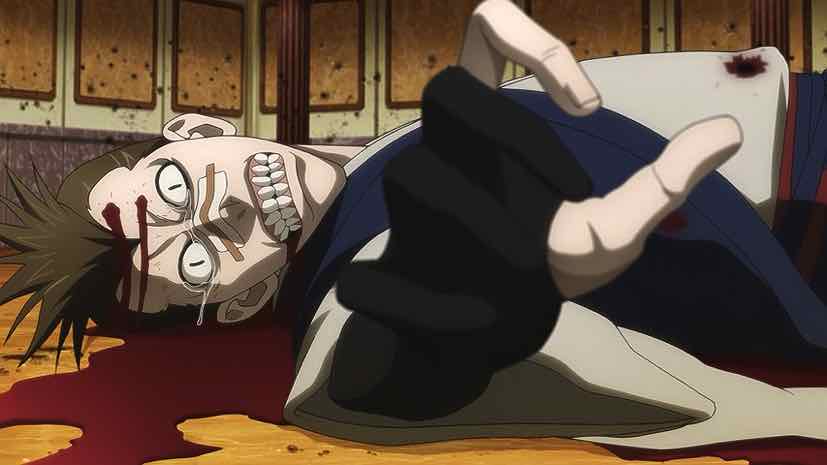 In the long game, of course, Kanryuu is absolutely right – his time (or that of those like him) has arrived, and the Oniwabanshu (and Kenshin too) are living relics. But their deaths are not in vain, because the early Gatling Gun could go through a magazine of 200 rounds in about a minute – and that’s it (until you reload it, and in those early ones you had to wait for it to cool down as well). There’s great pathos in this – the value their lives had was in giving them up, but give them up they did.
In the long game, of course, Kanryuu is absolutely right – his time (or that of those like him) has arrived, and the Oniwabanshu (and Kenshin too) are living relics. But their deaths are not in vain, because the early Gatling Gun could go through a magazine of 200 rounds in about a minute – and that’s it (until you reload it, and in those early ones you had to wait for it to cool down as well). There’s great pathos in this – the value their lives had was in giving them up, but give them up they did.
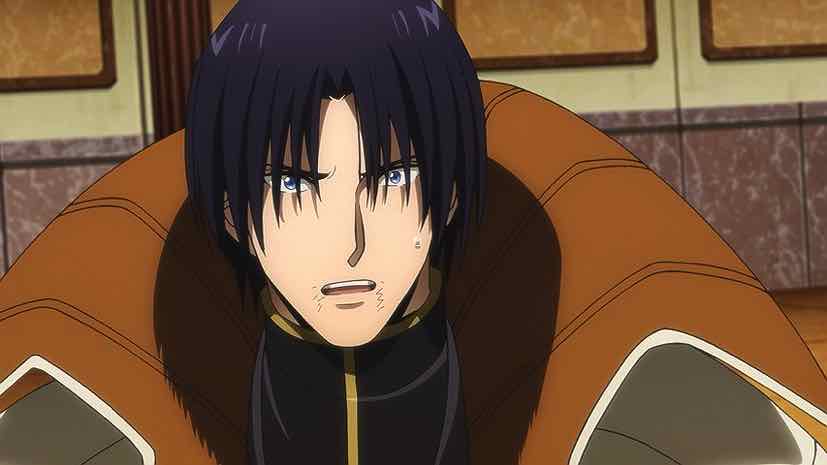 Kenshin – as Yahiko notes – shows remarkable restraint in not ending Kanryuu right then and there. His oath is not a trivial thing to Kenshin, and it’s a good thing for Kanryuu’s sake too. As for Megumi, she’s prepared to take responsibility for her crimes as she sees it. It’s Sano who stops her, not so much for her sake but for the fact that her throwing her life away needlessly would be a betrayal of all those who sacrificed so much to save it. Having been foiled in that turn she tries to turn herself in as the opium chef, but Kenshin is having none of that either. He’s already banked a tremendous amount of goodwill with the police chief, who agrees to remand her into his custody.
Kenshin – as Yahiko notes – shows remarkable restraint in not ending Kanryuu right then and there. His oath is not a trivial thing to Kenshin, and it’s a good thing for Kanryuu’s sake too. As for Megumi, she’s prepared to take responsibility for her crimes as she sees it. It’s Sano who stops her, not so much for her sake but for the fact that her throwing her life away needlessly would be a betrayal of all those who sacrificed so much to save it. Having been foiled in that turn she tries to turn herself in as the opium chef, but Kenshin is having none of that either. He’s already banked a tremendous amount of goodwill with the police chief, who agrees to remand her into his custody.
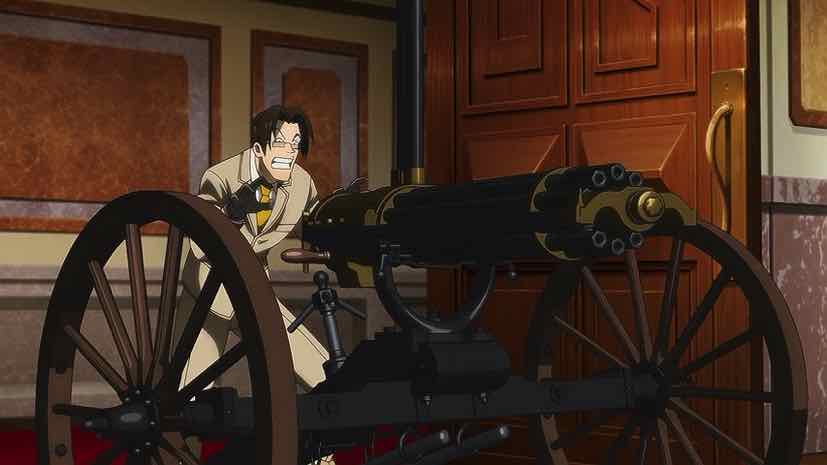 Kenshin offers her the example of his life as a model for hers. Suicide is one form of atonement, yes – but it brings back none of the people he killed. The only form of atonement consistent with living on is to try and save as many lives as possible (which is impossible if you’re dead). He must do it with a weapon meant to kill, but for Megumi the path is more direct – she can save lives quite literally. Apprenticing to Gensai-sensei is a first step on that path. I felt the same here as I did the first time – Megumi frankly gets a better deal than she deserves here, but that just puts the onus on her to do the right thing with it.
Kenshin offers her the example of his life as a model for hers. Suicide is one form of atonement, yes – but it brings back none of the people he killed. The only form of atonement consistent with living on is to try and save as many lives as possible (which is impossible if you’re dead). He must do it with a weapon meant to kill, but for Megumi the path is more direct – she can save lives quite literally. Apprenticing to Gensai-sensei is a first step on that path. I felt the same here as I did the first time – Megumi frankly gets a better deal than she deserves here, but that just puts the onus on her to do the right thing with it.
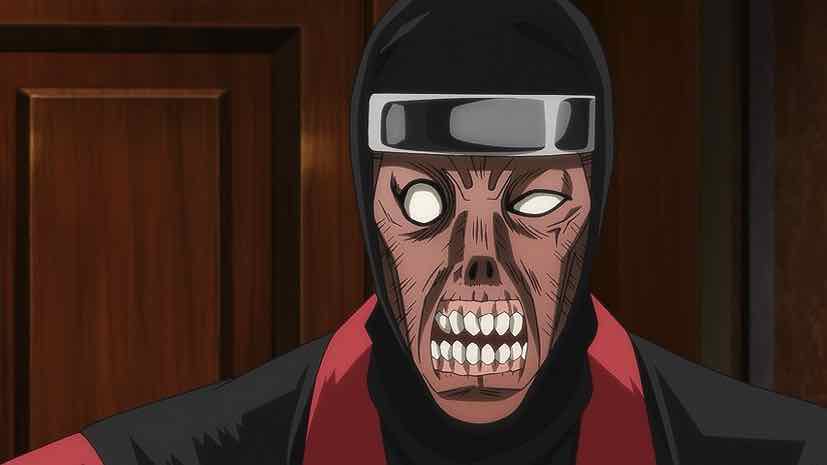 One final observation – this reboot has toned down a lot of the broad humor, though it’s more accurate to say that Furuhashi inserted a lot more of it than the source material. But there is some of that in the manga, and it was nice to see a few examples in the final scene here. Like the slow build to the “tastes awful” moment, and Kaoru’s “No lady foxes allowed entry!” sign. One might even say that by returning to manga levels of comedic restraint, the 2023 version makes those humorous moments stand out a lot more.
One final observation – this reboot has toned down a lot of the broad humor, though it’s more accurate to say that Furuhashi inserted a lot more of it than the source material. But there is some of that in the manga, and it was nice to see a few examples in the final scene here. Like the slow build to the “tastes awful” moment, and Kaoru’s “No lady foxes allowed entry!” sign. One might even say that by returning to manga levels of comedic restraint, the 2023 version makes those humorous moments stand out a lot more.


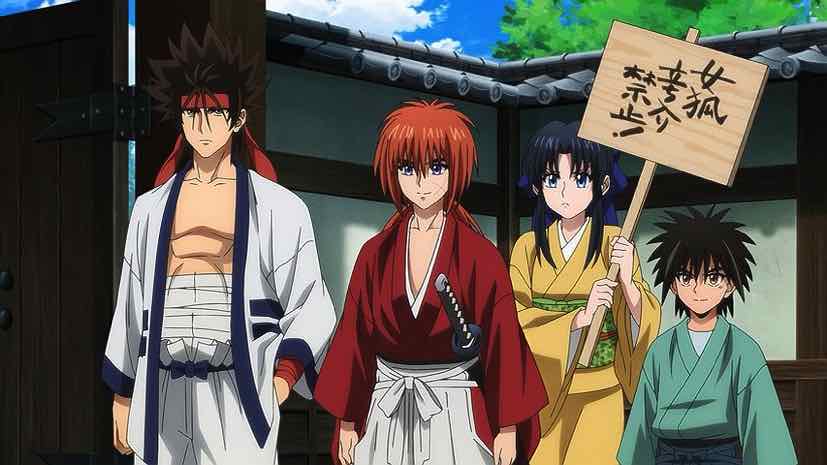
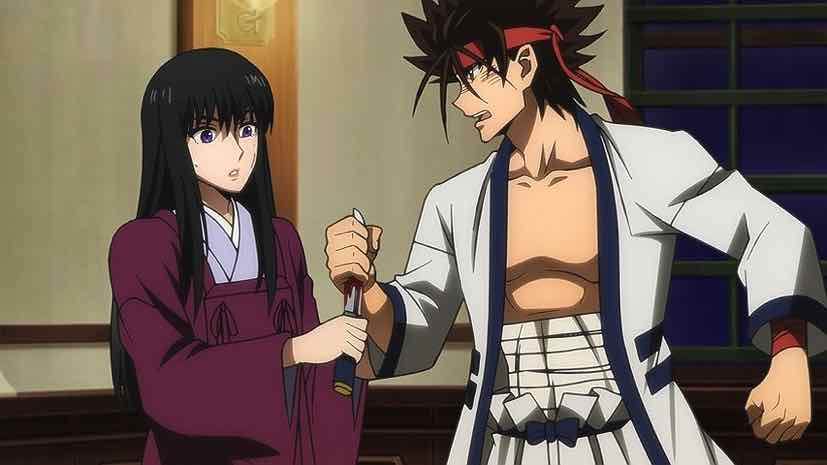
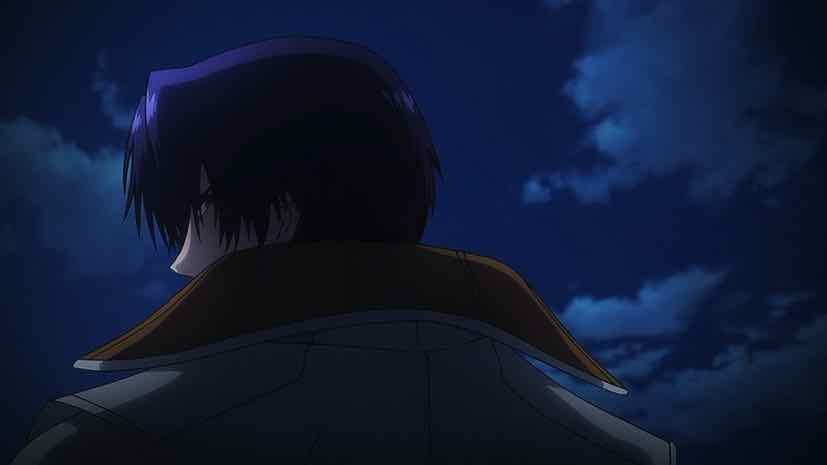
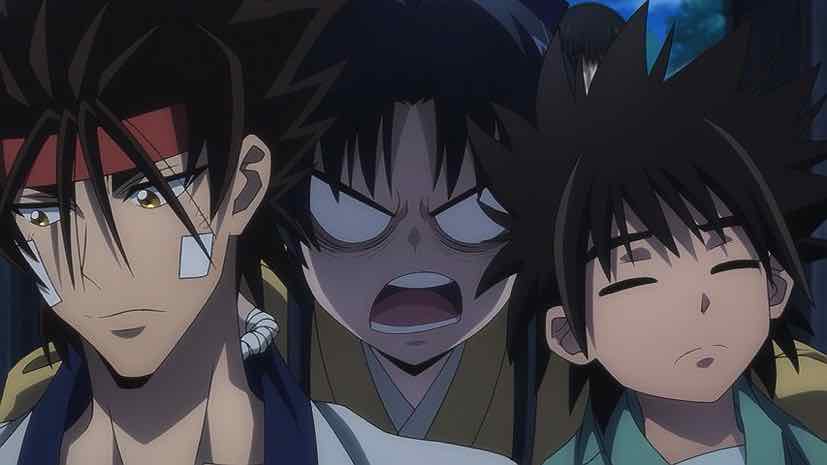
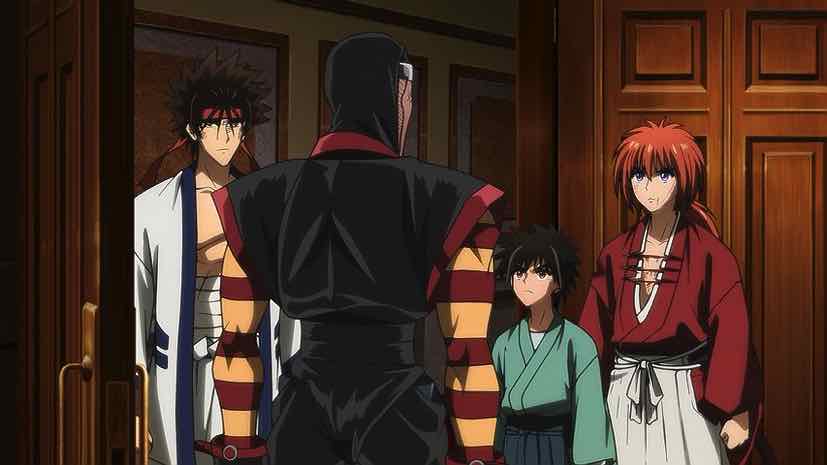
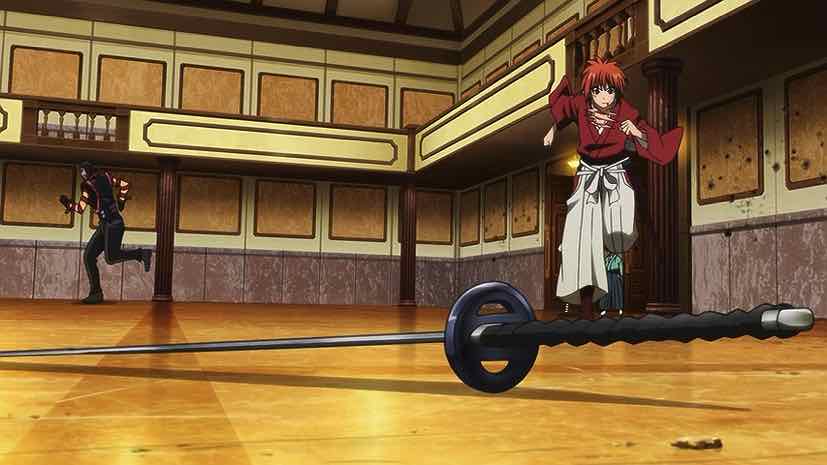
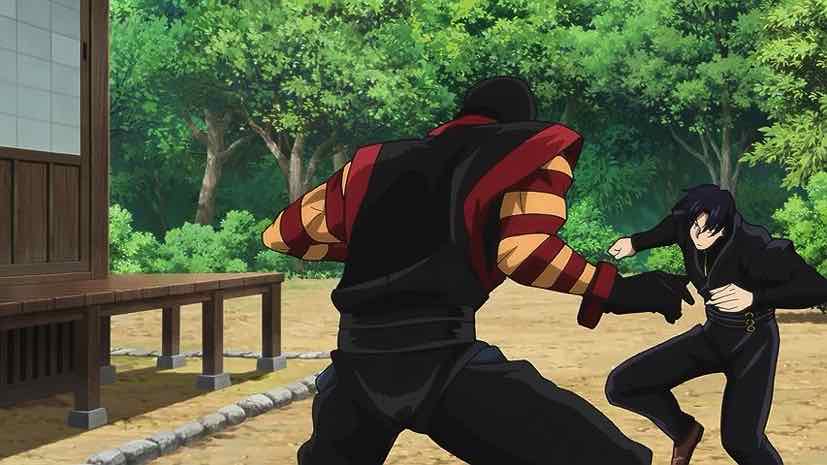
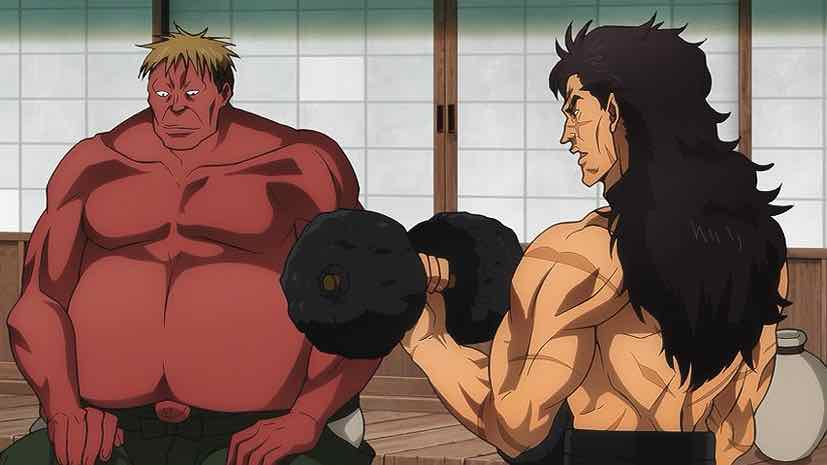
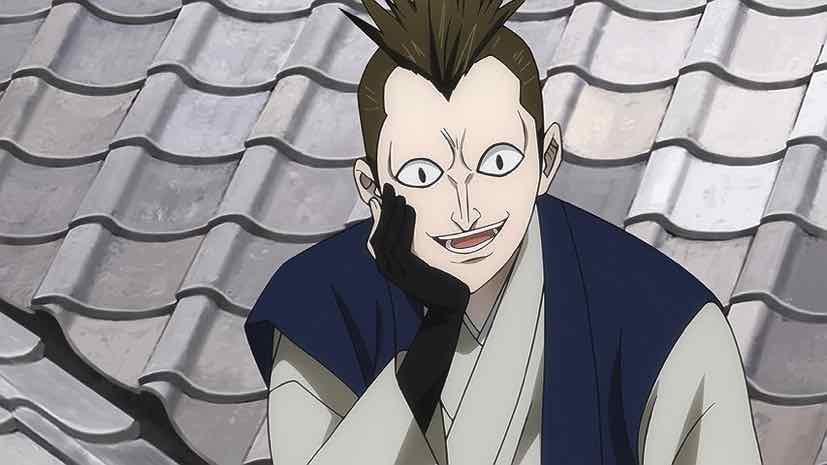

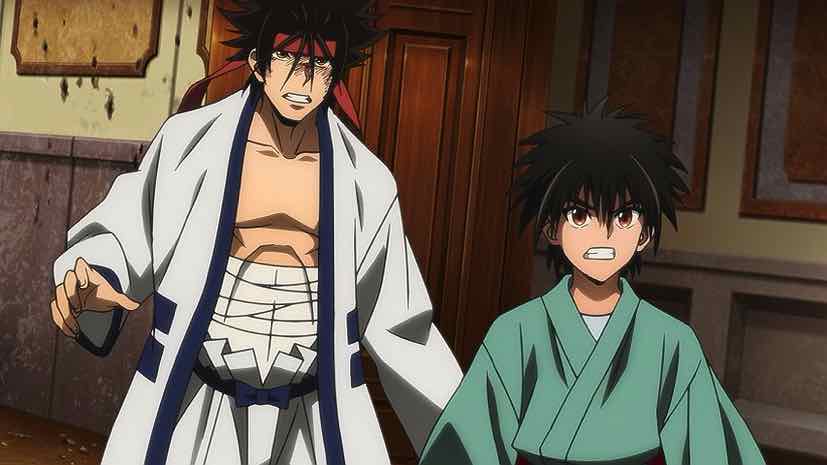
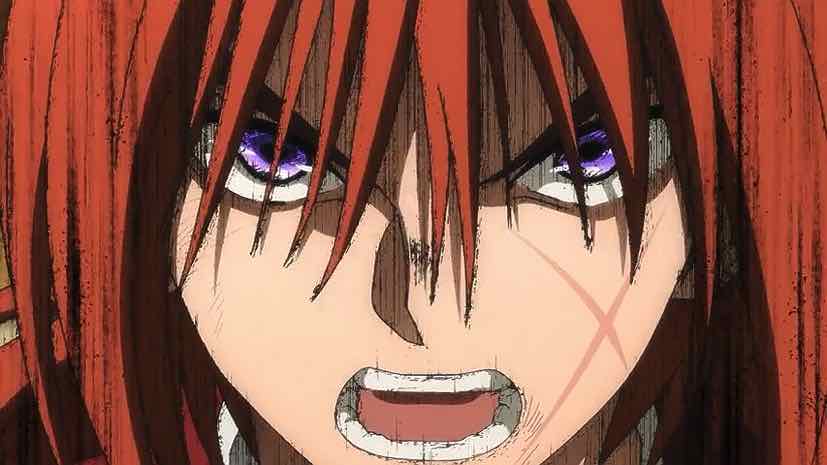
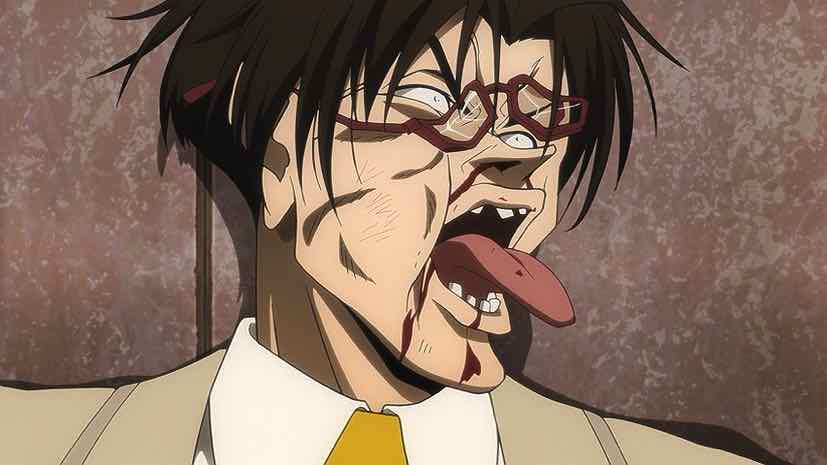
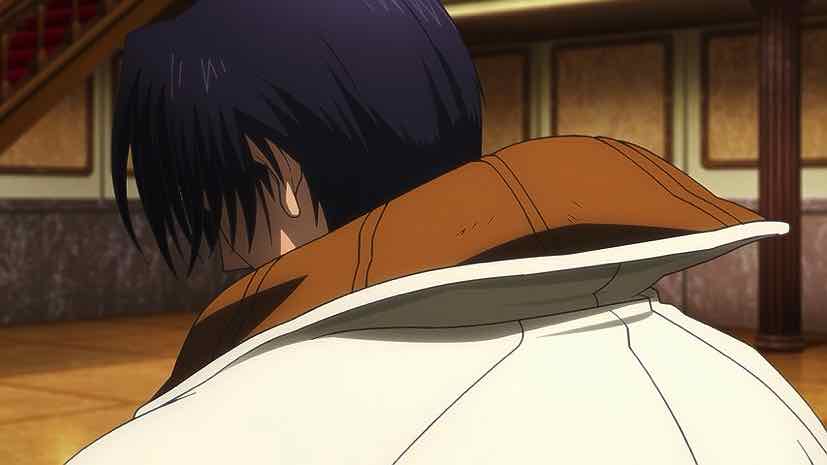
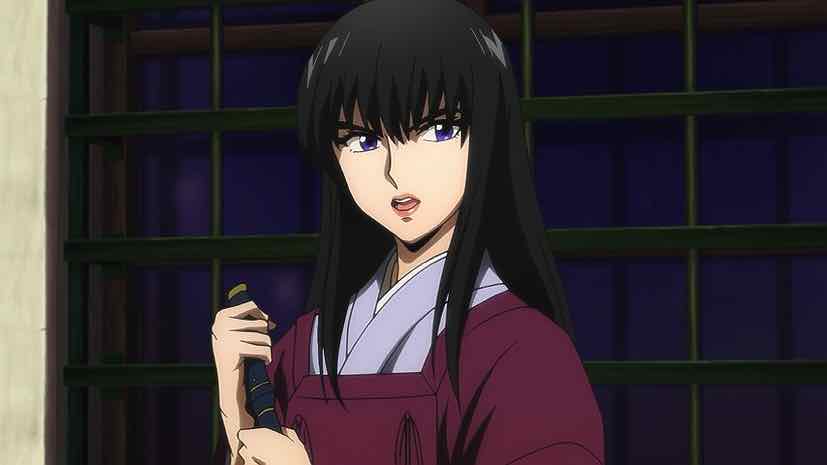
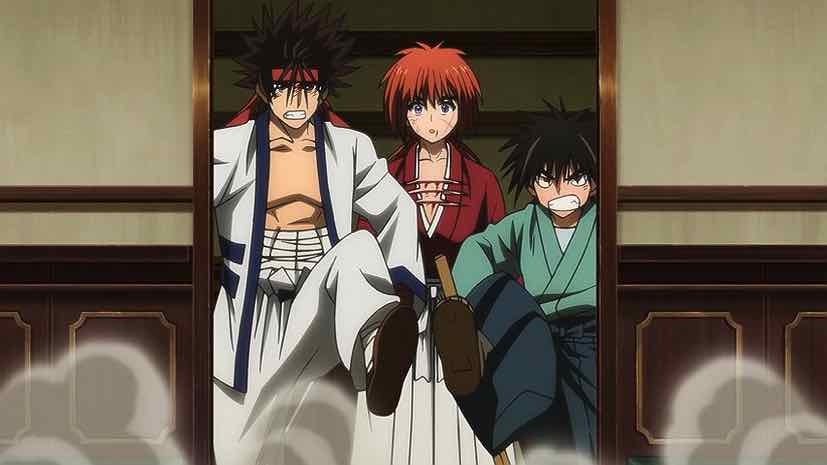
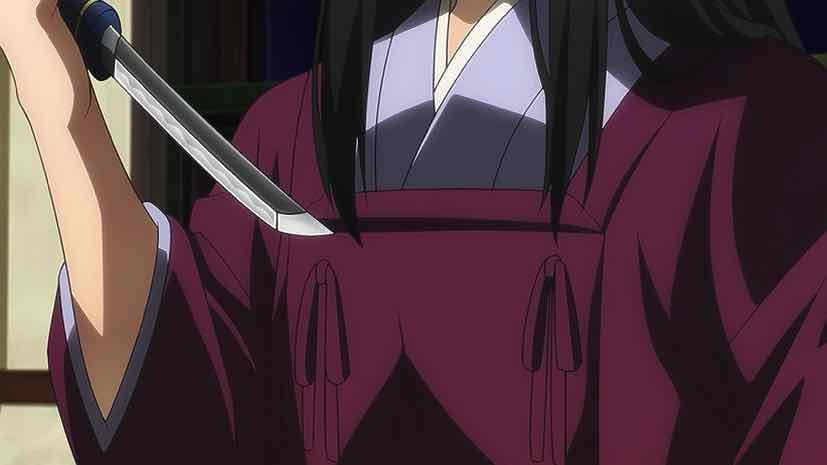

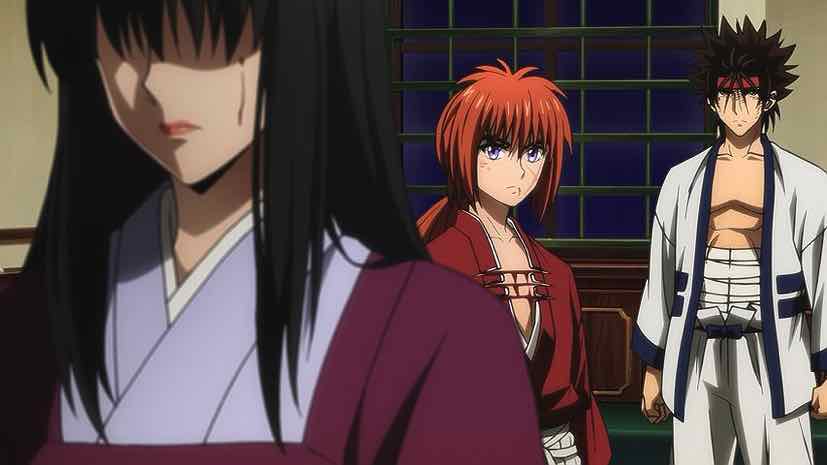
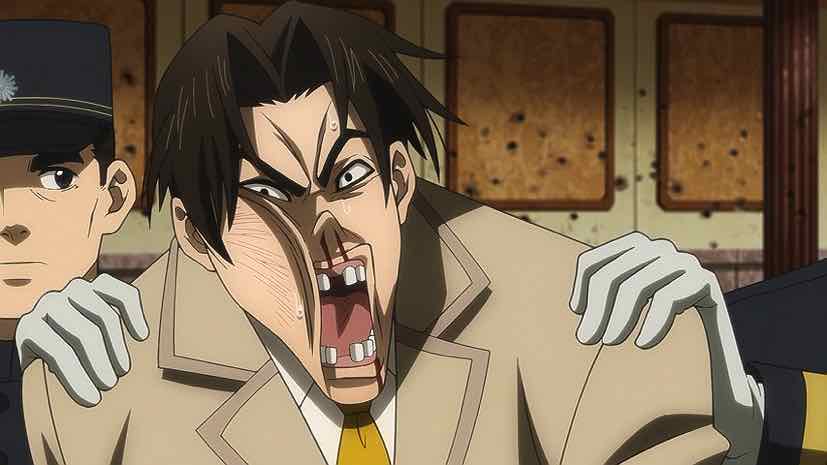
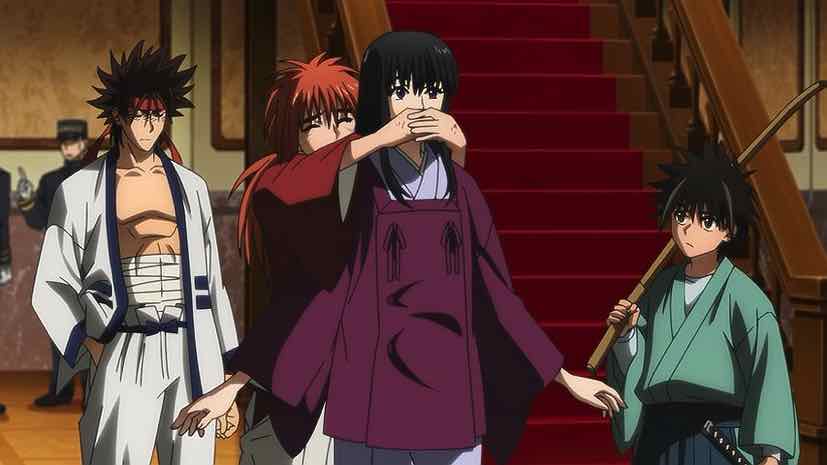
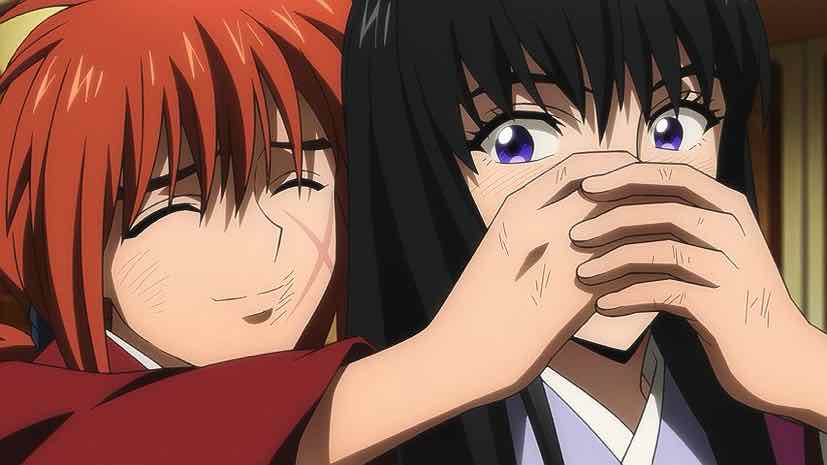
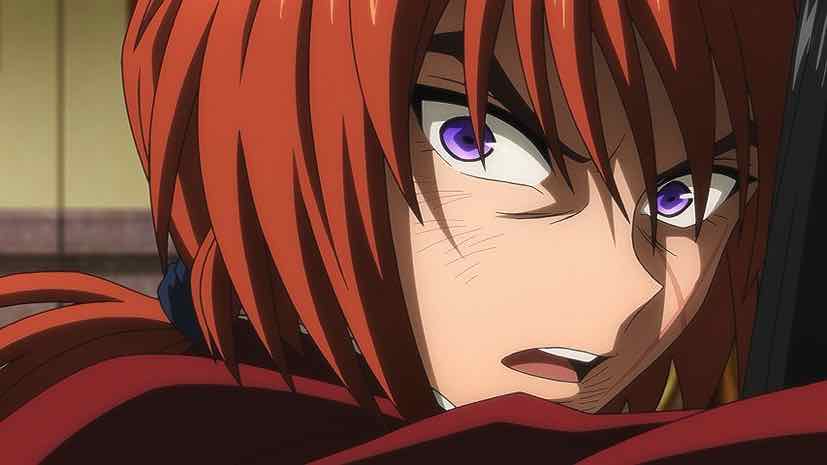
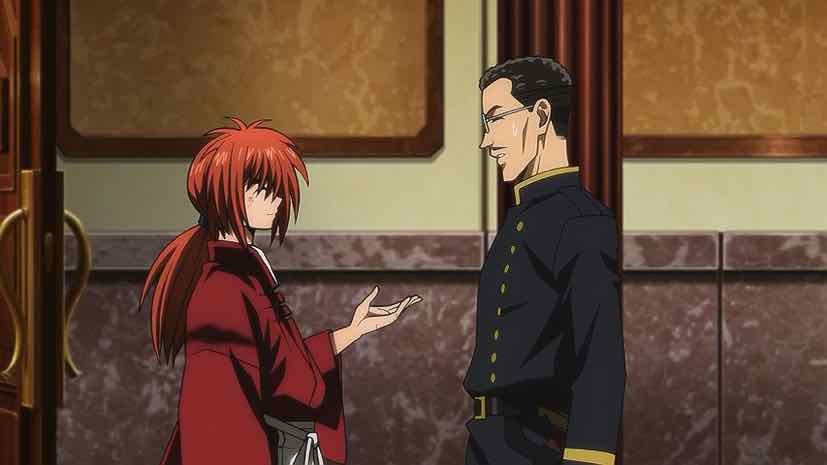
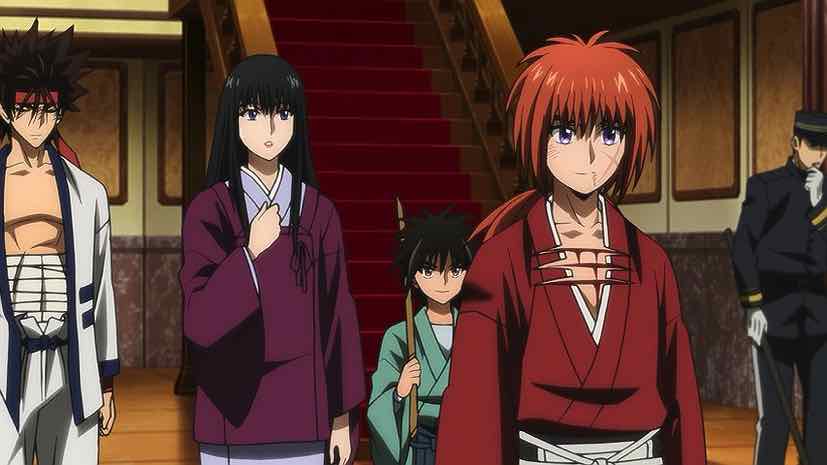

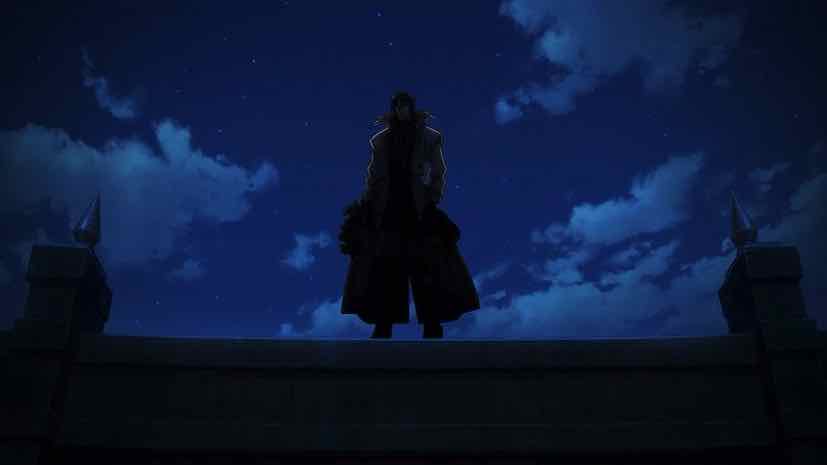
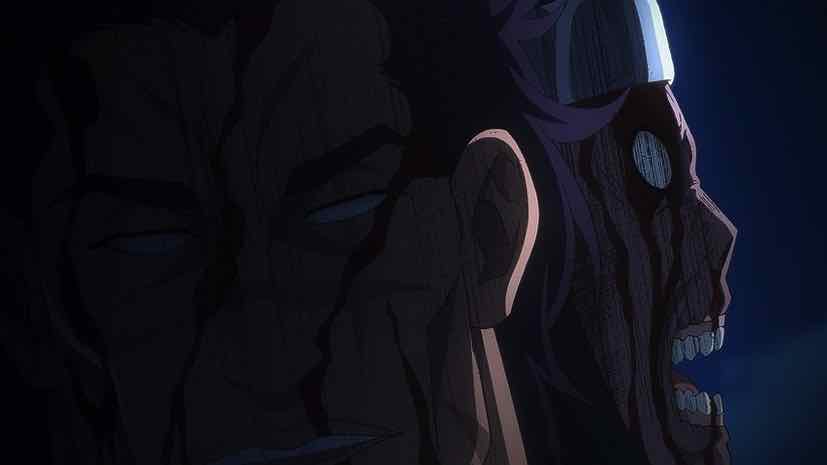

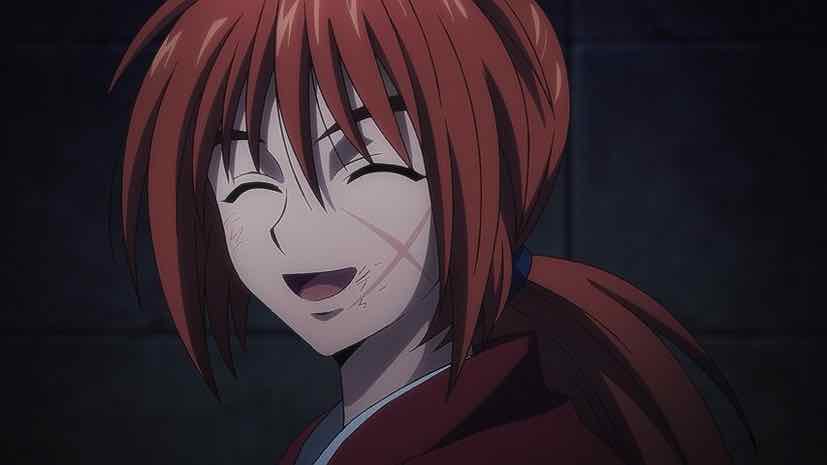
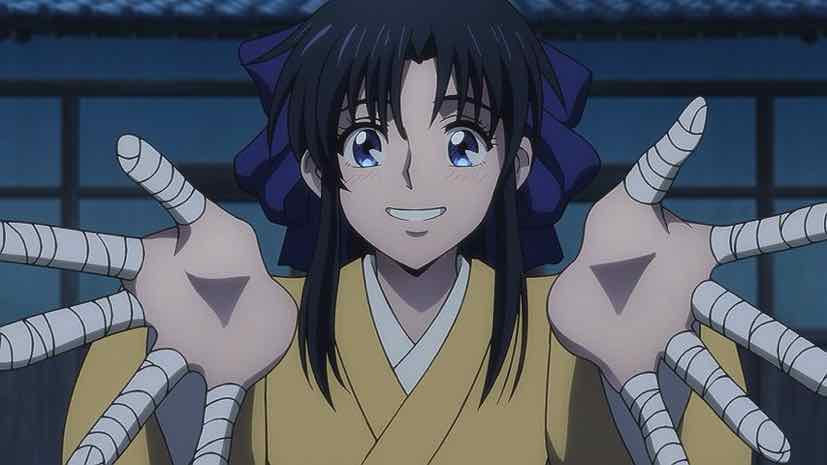
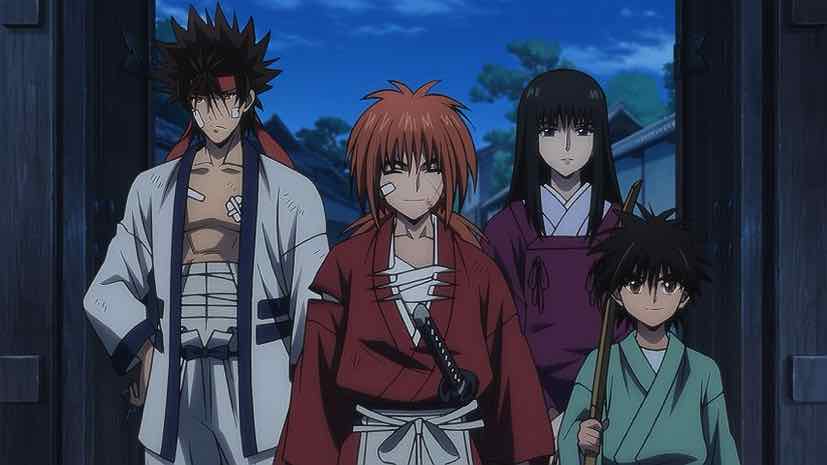

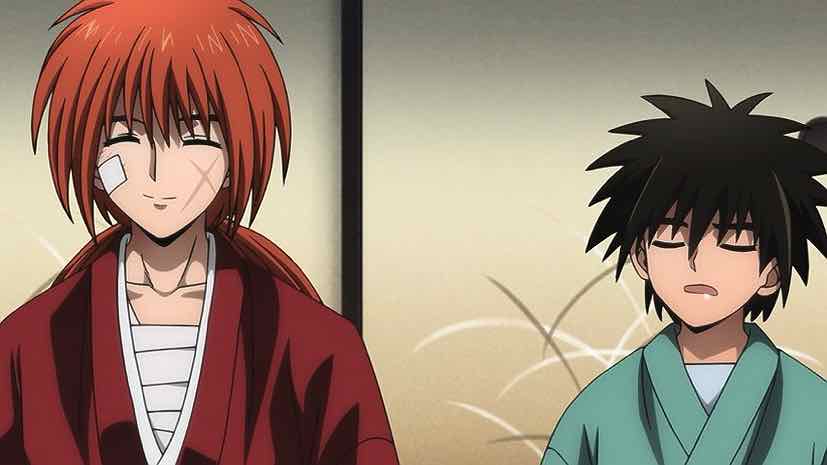
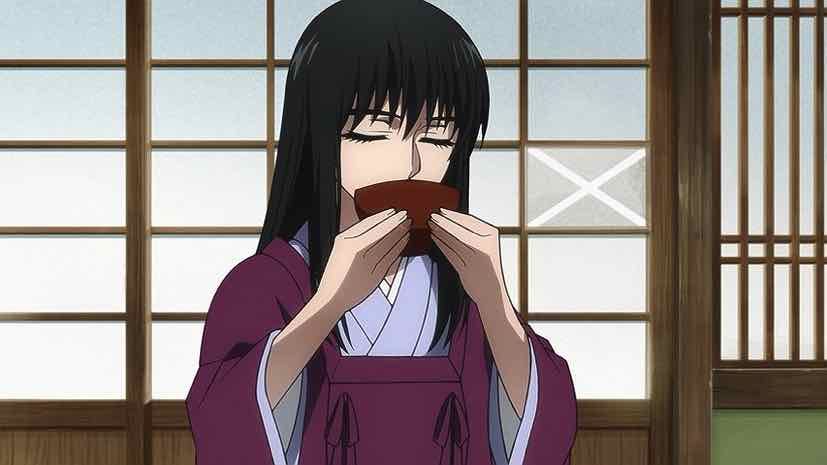
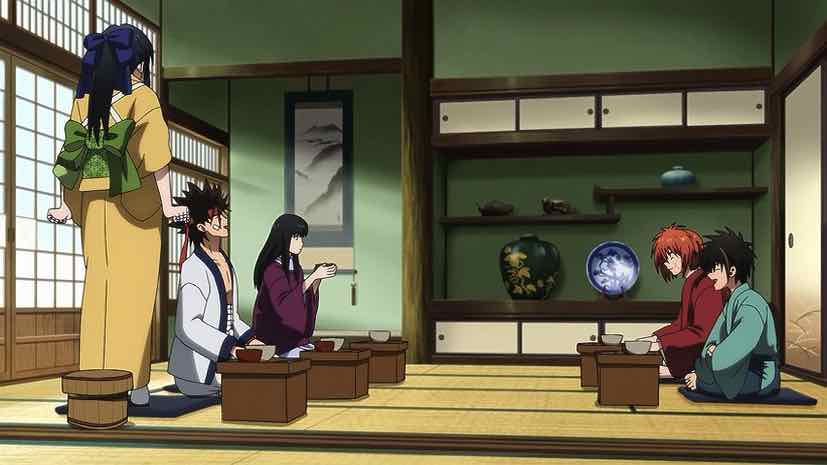
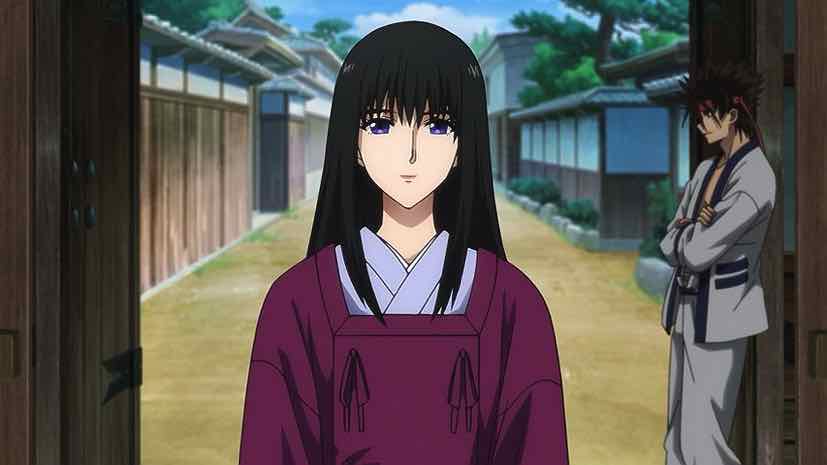
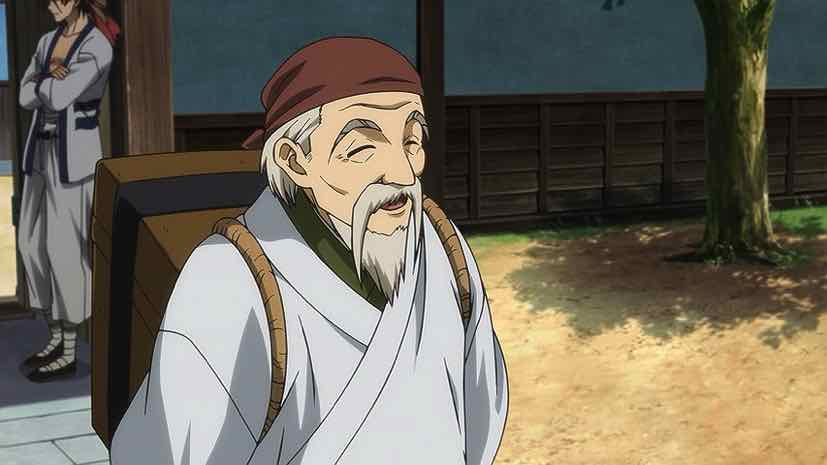

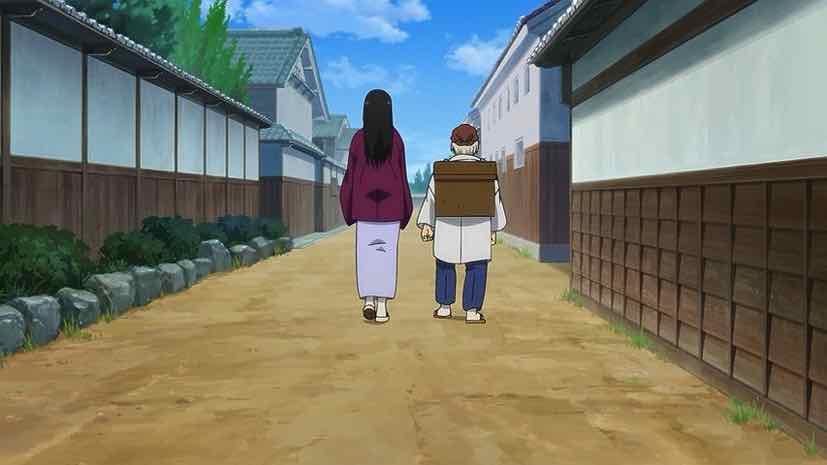
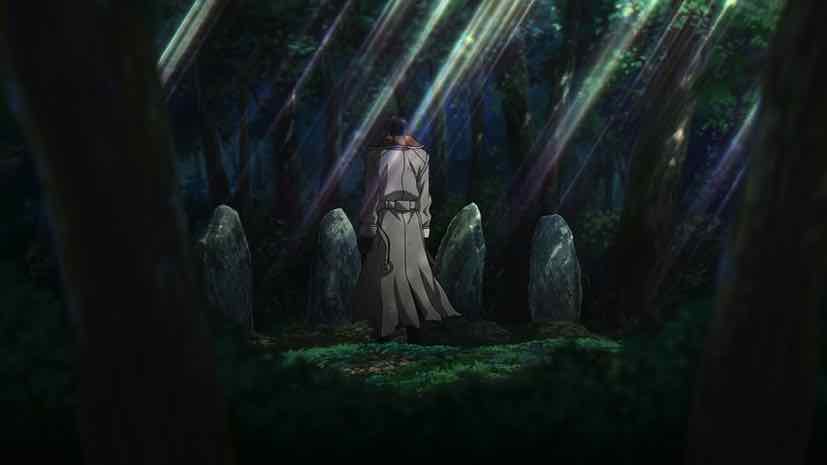
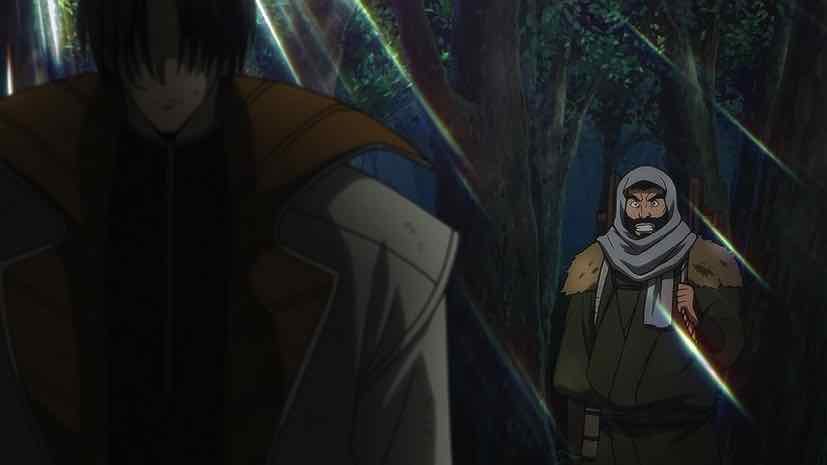

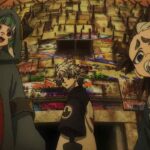
ruicarlov
September 30, 2023 at 5:16 amAbout the humor, at least in some remakes I’ve seen (Sailor Moon comes to mind), it does seem to be a trend on removing a good deal of derpy faces and random shouting. Some days ago I say a gmail avatar of somone I know and I realized it was and SD-face of the old Kenshin, which I haven’t seen this time around. I do believe this is a good thing. I get the idea the older versions relied a bit too much on that, without good returns.
aldeayeah
September 30, 2023 at 6:20 amOn the other hand, the second, more faithful adaptation of Fruits Basket was IMO gutted by the toning down of humor in favor of melodrama.
Guardian Enzo
September 30, 2023 at 9:26 amI agree with that, and I think it comes down to the fact that the source material there is simply not as good as RK and HxH. That’s subjective of course but for me 100% the case.
Raikou
September 30, 2023 at 2:18 pmYeah, you’re right about the old anime has a lot of additional humor. I remembered Kaoru’s jealousy towards Megumi was more apparent, and Kenshin said ‘Oro’ a lot.
Snowball
September 30, 2023 at 11:19 pmFirst of all, I also thought last week’s episode was one of the best anime episode that this year’s anime had to offer. As I said before, RK has some of the best fight choreography and last week’s episode didn’t pale in comparison to the original series, I even thought it was better and the death of the four subordinates was quite impactful.
I found Kenshin in the manga to be more cheeky than in the 90’s anime series, especially when he kind of abuses his position to acquit Megumi from her crime. Also, there were some crude humour in the manga which I’m glad that both anime versions omitted.
Guardian Enzo
September 30, 2023 at 11:44 pmI don’t remember much I’d consider crude, but it’s been a long time since I read much of the manga.
Snowball
October 1, 2023 at 3:41 amI don’t remember there being much of it in the manga either, but I reread the corresponding chapters yesterday that showed Yahiko smack and the old doctor touching Megumi’s backside as a joke.
Guardian Enzo
October 1, 2023 at 9:50 amWell, Yahiko is like ten – that’s not exactly 18+.